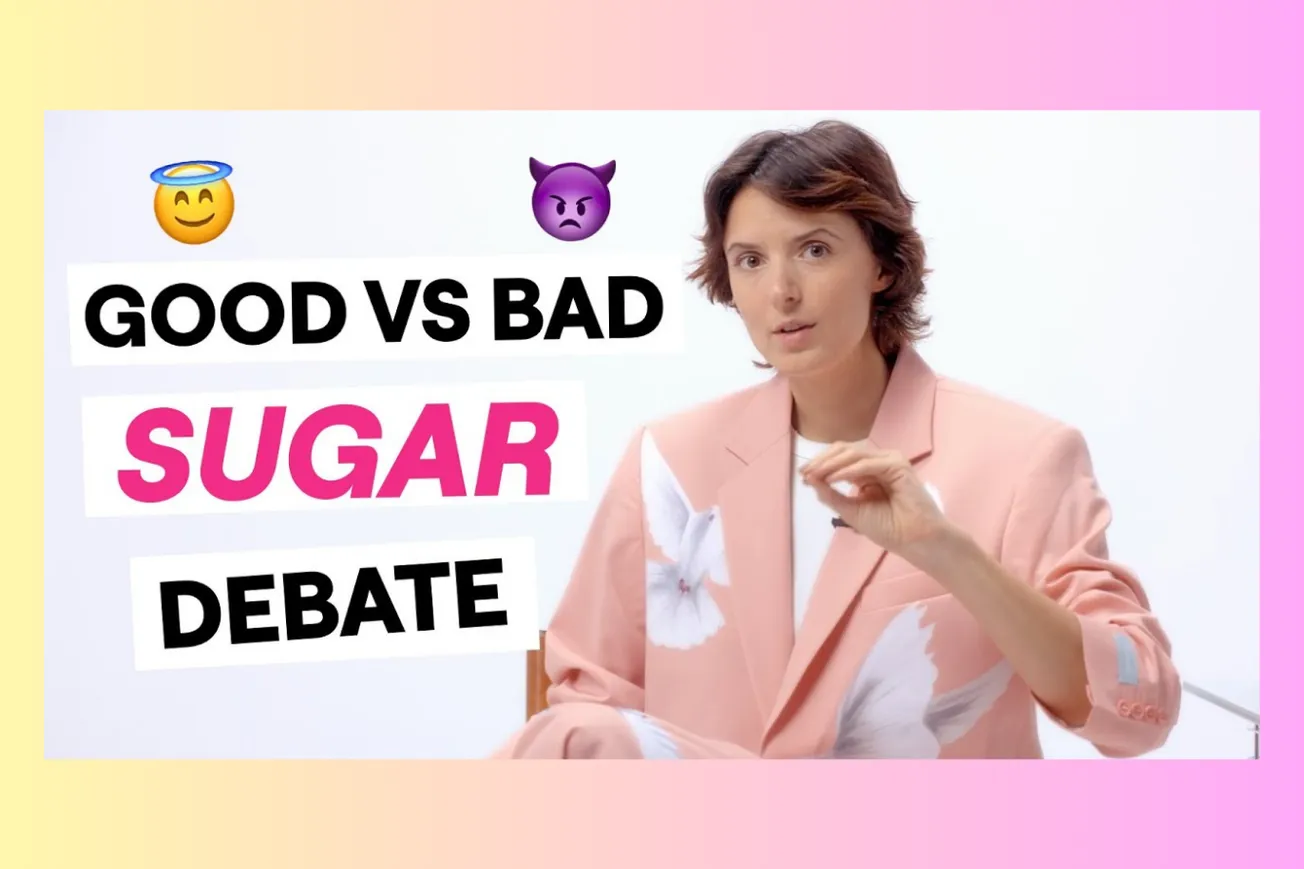Table of Contents
Sugar is sugar—no matter the source. Here’s what you need to know to stop falling for sweet marketing myths and protect your glucose levels.
Key Takeaways
- All sugars—whether from honey, fruit juice, or cane—are molecularly identical and impact your body the same way.
- Whole fruit is healthier than fruit juice or smoothies due to its fiber, which blunts sugar’s effect on blood glucose.
- Honey is not a health food; it’s sugar with a marketing halo. Eat it for taste, not for antioxidants.
- “Natural,” “organic,” or “no added sugar” labels often disguise high sugar content from processed fruit or sweeteners.
- Better sweeteners include allulose, stevia, erythritol, and monk fruit; avoid aspartame, sucralose, xylitol, and maltitol.
- If you must consume sugar, pair it with protein, fiber, or fat to reduce glucose spikes.
- Food companies use misleading sugar names to trick consumers—always read ingredient labels carefully.
- Switching from regular to diet soda, though not ideal, still significantly reduces sugar-related health risks.
The Sugar Myth: Why Source Doesn’t Matter
- Jesse Inchauspé, aka the Glucose Goddess, uses the story of Olivia, an 18-year-old from Argentina, to illustrate sugar confusion.
- Olivia's switch from a processed breakfast (hot chocolate, toast, and jam) to a fruit smoothie resulted in worse skin, energy, and focus.
- The culprit: her new smoothie packed more sugar than her old breakfast, despite being made from fruit.
- The sugar molecule in fruit (sucrose) is exactly the same as in hot chocolate or candy. The body doesn't differentiate based on source.
“Sugar is sugar for the body. The body doesn’t make a difference between cake and fruit.”
- This highlights a core misunderstanding: sugar's biological effect is determined by its molecular structure, not its origin.
- Olivia improved once she transitioned to a savory, protein-rich breakfast with optional whole fruit.
- Smoothies and juices remove the fiber that helps blunt glucose spikes, making their sugar content hit harder and faster.
Fiber: The Hidden Hero in Whole Fruit
- Whole fruit contains sugar, but also critical fiber that slows digestion and moderates the glucose response.
- When fruit is juiced or blended, fiber is removed or damaged, stripping away the body's natural defense.
- Juicing removes fiber entirely, leaving just free sugars.
- Blending breaks down fiber structure, reducing its protective effect.
- For example, apple juice delivers the same sugar molecules as soda, without the buffer of fiber.
- This makes whole fruit a fundamentally different nutritional choice than fruit-derived products.
The Honey Illusion: Sweet But Not So Innocent
- Honey enjoys a "natural" reputation, often touted for its antioxidants and medicinal uses.
- Inchauspé argues that most commercial honey is just glorified sugar syrup.
- Even raw, local, organic honey is chemically identical to table sugar: a mix of glucose and fructose.
- The body treats all sugars the same, regardless of whether they came from a bee or a beet.
"If you eat honey, do it for pleasure, not because it’s healthy."
- As for antioxidants: you'd need six teaspoons of honey to equal the antioxidant power of one tiny blueberry.
- Instead, eat vegetables and fruit for antioxidants—they deliver the benefits without the glucose spike.
Deceptive Labels: How Food Packaging Tricks You
- Terms like "100% natural," "no added sugar," or "organic" are often meaningless in terms of sugar content.
- "100% natural" simply means no synthetic additives—not that the product is low in sugar.
- A yogurt labeled "natural" can still contain cane sugar or fruit concentrates.
- "No added sugar" just means sugar wasn’t added during production—it might still be full of naturally occurring sugars extracted from fruit.
- The takeaway: marketing language is designed to mislead. Always check the actual ingredient list.
- Common disguises for sugar include:
- Fruit juice concentrate
- Glucose syrup
- High fructose corn syrup
- Panela, molasses, cane juice
- Corn syrup solids
- These are all just different names for the same molecular culprits.
Choosing Sweeteners: The Good, The Bad, and The Ugly
- Not all sweeteners are equal. Some disrupt glucose and insulin, others pass through the body more benignly.
- Avoid these sweeteners:
- Aspartame
- Sucralose
- Xylitol
- Maltitol
- Acesulfame K
- Safer options include:
- Allulose
- Stevia
- Erythritol
- Monk fruit (Luo Han Guo)
"It’s always better to drink a diet soda than a regular soda with 25 grams of sugar."
- This doesn’t make diet soda healthy—just the lesser evil. Water remains the best choice.
- Data overwhelmingly supports that real sugar causes more harm: fatigue, brain fog, cravings, acne, inflammation, and chronic disease.
Sugar Hacks: How to Reduce the Damage
- You don’t have to give up sugar—but you should learn how to minimize its metabolic impact.
- Inchauspé recommends "dressing up" sugar with other nutrients:
- Eat sugar after a meal, not on an empty stomach.
- Pair with fiber, fat, or protein to slow absorption.
- Add vinegar to meals (like a pre-meal drink) to blunt spikes.
- Try her "anti-spike capsules" before carb-heavy meals (made from plants, tested clinically).
- The goal is to enjoy sugar in a way that doesn’t hijack your blood sugar levels and lead to energy crashes or inflammation.
- You can find all of Inchauspé’s glucose hacks in her resources, but these three offer a strong start.
Two sentences to remember: Sugar is chemically identical, whether it comes from fruit, honey, or a soda can. The smart strategy isn’t avoiding all sweetness—but using it wisely, with hacks that protect your body.





